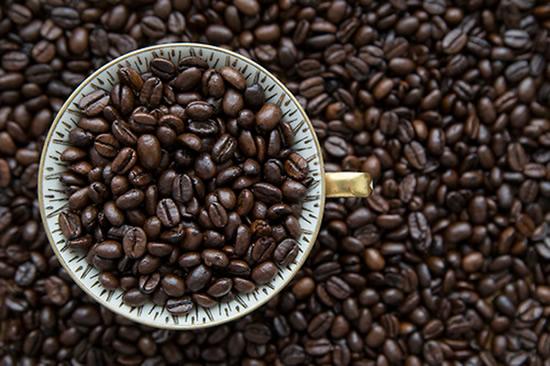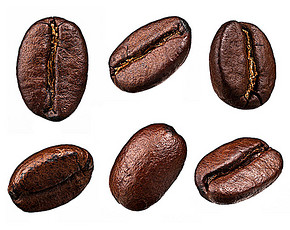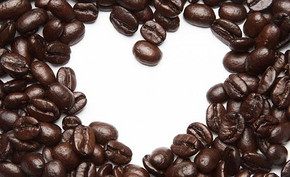Introduction of Baoshan Iron pickup Coffee beans
Follow the caf é (Wechat official account vdailycom) and found that Beautiful Cafe opened a small shop of its own.
The first time I heard the word "iron pickup" was in a book by Taguchi. At that time, I always thought that it had something to do with the "alpine tin wind fight" in China. Until 2014, after working as a cafe with Lingling for a year, I decided to focus on the boutique coffee business, so I decided to go to the western United States, where the boutique coffee industry was most developed at that time, driving south from Seattle to San Diego, "sweeping" city by city. looking for our favorite boutique cafe and that favorite cup of coffee. Among the intellectuals in San Francisco, we finally found our favorite cup: the Bolivian mountain iron pickup. So I brought it back to China and shared it with my friends. Its unique wild fruit and sweet and dried fruit flavor, coupled with the bright taste and clear pure thickness, also impressed friends at home. So we decided to go to the United States frequently and come back with this bean in person and produce it for sale in Hangzhou. Since then, berries have also become the first coffee shop in Hangzhou to use American boutique beans to make espresso.

The alpine iron pickup in Bolivia comes from Fenkata Casey Manor on Mount Sudyanjas in Anacacchi province. Due to the 2500 meters high altitude but no frost in the area, coupled with the production of tin, the 40 hectares of coffee berries in the manor are rich in a variety of mineral elements, creating a natural wild fruit flavor. The estate also produces other varieties, such as Rosa, Kaduai, Java and so on, but none of them performs so well in the region. Coupled with the manor owner's focus on boutique coffee cultivation, the implementation of mature closed small area planting, all kinds of care for coffee trees, and careful control in the picking process, the quality of the manor iron pickup coffee is among the best in the same variety of coffee in the world. The data of tin cards in this area are as follows:
Altitude: 2500 m
Planting area: 50 cm
Shading: native plants
Climate: tropical rain forest
Tree age: 7 years
Treatment method: manor washing
Sun-dried: 1800 m above sea level
Fermentation time: 13-18 hours
Picking period: 6 months
Fertilizer: farm manure
Washing method: mechanical
Ripe fruit color: positive red
Quality separation method: floating method
Sun time: 7 days
Fermentation method: dry fermentation
Awarded: COE (Excellence Cup)
At the end of 2015, under the situation that boutique cafes all over the country began to promote "cross-ocean boutique cooked beans", we began to worry about the freshness of boutique beans imported from developed consumer countries, so we decided to introduce a German PROBAT roaster to study and develop the roasting process of coffee and start our own roasting model. I began to travel to study, to the German PROBAT General Factory to learn the principle of roaster, and then learn SCAA roaster certification, the only purpose is the same as before, the pursuit of a good cup of coffee.
However, we are obsessed with the delicacy of the Bolivian iron pickup, but we cannot cooperate directly with the manor like the intellectuals. In addition, the moral bottom line of domestic raw bean importers is not high, the freshness of imported raw beans and other quality parameters are worrying, even if some importers do not add defective beans, the price is ridiculously high. In the face of all these problems, we are full of confusion.
Until one day, an eldest brother who was determined to develop the front end of domestic boutique coffee production came to the berries and put the coffee raw beans produced in Baoshan, Yunnan, in front of me. I seemed to see the dawn of realizing the production of domestic iron pickup coffee. Of course, Yunnan's boutique coffee industry has been monopolized by international coffee giants for a long time and pays attention to mass production, which leads to the lag in the development of domestic boutique coffee planting technology. However, we firmly believe that as long as we unite upstream, unite as one, and educate local farmers about boutique coffee, China's boutique coffee industry will develop rapidly. Although the quality of tin cards in Yunnan can not be as perfect as those in Bolivia, I firmly believe that as long as we promote them, increase farmers' income and encourage farmers to cultivate them carefully, China's boutique coffee industry will become better and better. One day, in the cafe, we will drink fine coffee of the same quality as mature tin trucks abroad.
Thanks to Brother Weng for his matchmaking and care, giving me the opportunity to get in touch with my colleagues in Baoshan Coffee, and for the invitation of Mr. Guo Xiaozheng, Chairman of Baoshan extra heavy Coffee Exchange Service Center. I have the honor to come to Baoshan to visit the coffee nursery garden, gene bank, farm, processing plant, and local coffee colleagues. I would like to thank Vice Mayor Song and Director Mo of Baoshan City for their company. Thank you Mr. Yang, founder of Zhongka, Mr. Xie, founder of Xinzhai Coffee, and Guo Wenkui, founder of Guoxin Coffee. Thank you for your recognition and help, and your contribution to the development of boutique coffee. Because of your selfless efforts, Chinese boutique coffee will become better and better.
Like the last trip to Mantenin, Huaxia will focus on recording what it saw, heard and felt during the trip to Baoshan Coffee in the next few updates. First of all, in order to give you a better understanding of tin card coffee, let's first understand its definition.
Official definition of intellectuals:
Typica is one of the oldest varieties of Arabica coffee discovered today, and the other is called bourbon. The Arabica species originated in Ethiopia, where it still grows naturally today in the highlands of the pristine rainforest. In the 13th and 14th centuries, the tree was brought to Yemen, and around 1700, iron pickups were planted in Hortus Botanicus in Amsterdam for breeding. The Ironpickup saplings are the first saplings brought from the Dutch royal garden to Central and South America and the New World to be planted. Iron pickup is a pure precious tree species with oval fruit shape, brass leaves and varied fruit flavor. Today's tin card species is almost extinct in America, because it is very hypocritical, the yield is very low, so every coffee farmer is prohibitive to it.
Wintgens, Jean Nicolas (2012). Coffee: Growing, Processing, Sustainable Production (Second ed.). Wiley-VCH VerlangGmbH & Co. KGaA. P. 78. ISBN 978-3527-33253-3.
Iron card species are most likely to be taken by Yemenis from Ethiopia to Malabar and India, and then to Indonesia by the Dutch. It was then brought from West India to the French colony of Martinique. Subsequently, it grew in other planting areas and derived many variants: Criollo (South America), Arabigo (Central America), Kona (Hawaii), Pluma Hidalgo (Mexico), Garundang (Sumatra), Blue Mountain (Jamaica, Papua New Guinea), San Bernado & San Ramon (Brazil), Kents & Chickumalgu (India).
The iron card species is one of the oldest Arabica tree species and has derived many other variants. The Ironpika bean is slender, the tree is tall, the fruit is oval, and the branches are slightly inclined. The four sides of the iron pickup are slender and open, with a tilt angle of 50 to 70 degrees. The coffee yield of each tree is very low, but the cup test score is very high. Formerly known as Arabica Iron pickup, the Scottish regiment brought the tree to Kenya from Yemen and planted it with bronze leaves. The Hawaiian tin card was introduced from Guatemala and renamed Kona with a brass leaf tip. Due to geographical reasons, the iron pickups grown on other coffee belts in the world are different, so they have become variants of iron pickups, such as Blue Mountain Coffee, Java Iron pickup, Guatemala Iron pickup, and so on. The leaf tips of all Irontruck species should be dark. Iron pickup is the first coffee variety grown in the new world. The iron pickup planted in Java was a Dutch gift to Father Louis XIV of France and survived in Persian gardens. The seeds were brought to French Martinique by the French in 1720.
Important Notice :
前街咖啡 FrontStreet Coffee has moved to new addredd:
FrontStreet Coffee Address: 315,Donghua East Road,GuangZhou
Tel:020 38364473
- Prev

Sharing the method of making Aldumara Coffee
Following Cafe Review (Wechat official account vdailycom) found that Fairview Cafe has a long history of opening its own shop for coffee produced in Mexico and is now one of the most important coffee producers in the world, while Aldura coffee bean is the top coffee bean in Mexico. The most unique thing about Aldura coffee beans is that the coffee beans are large, full and strong.
- Next

Cooking conditions of Zhongbao Mountain Iron Card suitable for Chinese Taste
Follow the caf é (official account vdailycom of Wechat) and found that Zhongbaoshan Iron Card cooking equipment suitable for Chinese taste in Mei Cafe: including Yunduohu, U-shaped filter cup, Hario electronic scale, Kalita thermometer, arbitrary hand frame (none is fine, but to subtract the water absorption of coffee powder bed), filter paper (primary color filter paper is recommended, although pulp tastes slightly
Related
- Detailed explanation of Jadeite planting Land in Panamanian Jadeite Manor introduction to the grading system of Jadeite competitive bidding, Red bid, Green bid and Rose Summer
- Story of Coffee planting in Brenka region of Costa Rica Stonehenge Manor anaerobic heavy honey treatment of flavor mouth
- What's on the barrel of Blue Mountain Coffee beans?
- Can American coffee also pull flowers? How to use hot American style to pull out a good-looking pattern?
- Can you make a cold extract with coffee beans? What is the right proportion for cold-extracted coffee formula?
- Indonesian PWN Gold Mandrine Coffee Origin Features Flavor How to Chong? Mandolin coffee is American.
- A brief introduction to the flavor characteristics of Brazilian yellow bourbon coffee beans
- What is the effect of different water quality on the flavor of cold-extracted coffee? What kind of water is best for brewing coffee?
- Why do you think of Rose Summer whenever you mention Panamanian coffee?
- Introduction to the characteristics of authentic blue mountain coffee bean producing areas? What is the CIB Coffee Authority in Jamaica?

